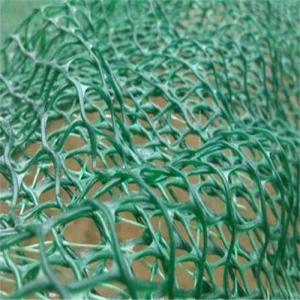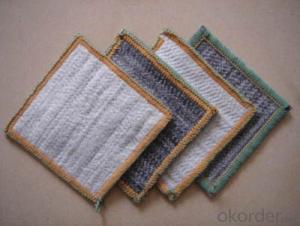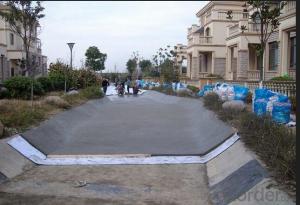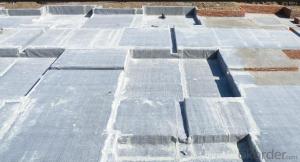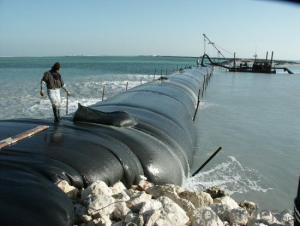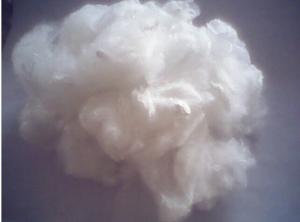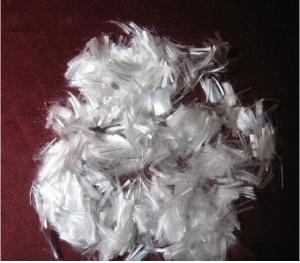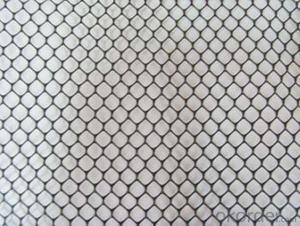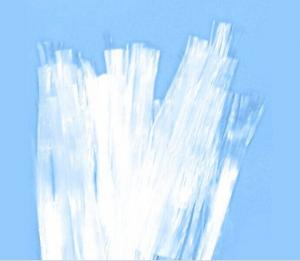Geomat 3D Mesh and Geonet for Erosion Control
- Loading Port:
- Qingdao
- Payment Terms:
- TT or LC
- Min Order Qty:
- 1000 m²
- Supply Capability:
- 100000 m²/month
OKorder Service Pledge
OKorder Financial Service
You Might Also Like
Geomat Description:
Geonet/Geomat is made from a kind of high-density polyethylene (HDPE) with properties of anti-aging and anticorrosion.
3D geomat erosion control mat is a kind of high polymer synthetic material made of 3D mesh structure, quality of a material is loose, flexible, with 90% of the space can fill soil,sand,the roots of the plants are grown through them balanced, the growth of grass make gauze pad, turf, soil surface firmly together, because the plant roots can be extended into the surface of the 30-50 cm, so the formation of a solid layer of green composite coating.
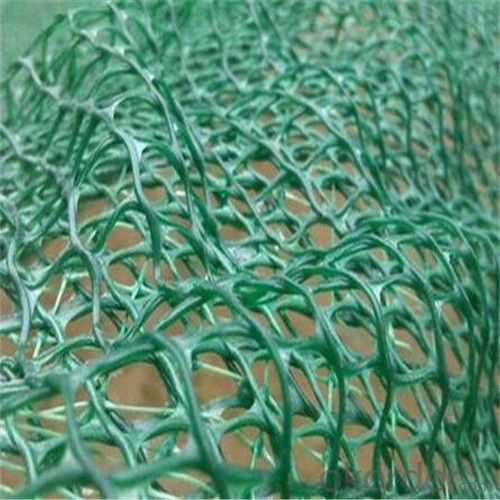
Geomat Specification:
CE121,CE131, CE151, DN1, HF10
Geomat Property:
1)Uniform structure, bear high pressure, improve the roadbed bearing capacity, enlarge its lifetime
2)Anti-aging, protect dam and rock surface from chemical erosion and sea water corrode.
Geomat Application:
1.Before the greensward grows, it prevents the surface of the land from the erosion of the wind and rain.
2 .Form compound protection layer with the vegetable, standing the wash-out of the high water level and large speed current.
3.Replace the concrete, asphalt, and block, using in the slope surface protection of roadway, railway, river-way, dyke, and the hillside, etc.
- Q:Are earthwork products compatible with other construction materials?
- Yes, earthwork products are generally compatible with other construction materials. Earthwork products, such as soil, gravel, or fill material, can be used in combination with various construction materials like concrete, asphalt, or steel to enhance their performance and stability. For instance, soil can be used as a base or backfill material for foundations, while gravel can be used as a sub-base for roads or pavements. However, compatibility may vary depending on specific project requirements and engineering considerations.
- Q:Are earthwork products resistant to chemical spills and contamination?
- Yes, earthwork products such as geosynthetics, geotextiles, and geomembranes are designed to be resistant to chemical spills and contamination. These materials are often used in environmental and containment applications where protection against chemicals, pollutants, and contaminants is crucial. They are engineered to have high chemical resistance and can effectively prevent the leakage and migration of hazardous substances.
- Q:How do earthwork products contribute to environmental sustainability?
- Earthwork products, such as soil erosion control mats, geotextiles, and sediment control devices, play a crucial role in promoting environmental sustainability. These products help prevent soil erosion, stabilize slopes, and control sediment runoff, which in turn protects water quality, preserves natural habitats, and minimizes damage to ecosystems. Additionally, earthwork products can enhance the efficiency of construction projects by reducing the need for excessive excavation and land disturbance, leading to less disruption to the environment. Overall, these products contribute to a more sustainable approach to land management and construction practices, mitigating environmental impacts and promoting long-term ecological balance.
- Q:How are geotextile mats used in erosion control on coastal cliffs?
- Geotextile mats are used in erosion control on coastal cliffs by being installed on the slopes to stabilize the soil and prevent erosion. These mats provide a protective layer that helps in retaining moisture, reducing surface runoff, and increasing the vegetation growth. Additionally, they help to absorb and dissipate the energy of waves and tides, minimizing the impact of water on the cliff face. Overall, geotextile mats play a crucial role in maintaining the stability and protection of coastal cliffs against erosion.
- Q:How do earthwork products contribute to soil stabilization in mining areas?
- Earthwork products such as geotextiles, geogrids, and geomembranes play a vital role in soil stabilization in mining areas. These products are designed to enhance the strength and stability of soil by preventing erosion, controlling water flow, and reinforcing weak areas. Geotextiles act as a barrier to prevent soil particles from being washed away, while geogrids provide structural reinforcement to the soil, reducing the risk of slope failures. Additionally, geomembranes can be used to line ponds or containment areas, preventing leaching of harmful substances into the soil. Overall, earthwork products contribute significantly to soil stabilization in mining areas, ensuring safer and more sustainable mining operations.
- Q:Can earthwork products be used in water features and ponds?
- Yes, earthwork products can be used in water features and ponds.
- Q:Can earthwork products be used for creating outdoor meditation spaces?
- Yes, earthwork products can be used for creating outdoor meditation spaces. Earthwork products such as natural stones, gravel, sand, and soil can be utilized to design and construct serene and tranquil outdoor spaces for meditation. These materials can be used to create pathways, seating areas, Zen gardens, or even small ponds, enhancing the overall atmosphere of relaxation and peace in an outdoor meditation space.
- Q:How do geosynthetic liners help in preventing contaminant leakage?
- Geosynthetic liners act as a barrier between contaminants and the surrounding environment, preventing leakage by providing a strong and impermeable layer. They are designed to resist chemical degradation, punctures, and tears, ensuring that hazardous substances, such as pollutants and waste materials, are effectively contained and do not seep into soil or water sources. Additionally, these liners can be engineered to enhance their performance by incorporating geotextiles and geomembranes, further minimizing the risk of contaminant leakage.
- Q:What are the maintenance requirements for earthwork products?
- The maintenance requirements for earthwork products typically involve regular inspection and cleaning to ensure proper functioning and longevity. This may include removing debris, sediment, and vegetation from the products, inspecting for any damage or signs of wear, and addressing any issues promptly to prevent further damage or deterioration. Additionally, proper drainage and erosion control measures should be implemented to prevent excessive water accumulation or erosion around the earthwork products. Regular maintenance and timely repairs are crucial to ensure the effectiveness and durability of these products.
- Q:What are the different types of geotextile fabric properties?
- Some of the different types of geotextile fabric properties include filtration, separation, reinforcement, erosion control, and drainage.
1. Manufacturer Overview |
|
|---|---|
| Location | |
| Year Established | |
| Annual Output Value | |
| Main Markets | |
| Company Certifications | |
2. Manufacturer Certificates |
|
|---|---|
| a) Certification Name | |
| Range | |
| Reference | |
| Validity Period | |
3. Manufacturer Capability |
|
|---|---|
| a)Trade Capacity | |
| Nearest Port | |
| Export Percentage | |
| No.of Employees in Trade Department | |
| Language Spoken: | |
| b)Factory Information | |
| Factory Size: | |
| No. of Production Lines | |
| Contract Manufacturing | |
| Product Price Range | |
Send your message to us
Geomat 3D Mesh and Geonet for Erosion Control
- Loading Port:
- Qingdao
- Payment Terms:
- TT or LC
- Min Order Qty:
- 1000 m²
- Supply Capability:
- 100000 m²/month
OKorder Service Pledge
OKorder Financial Service
Similar products
New products
Hot products
Hot Searches
Related keywords
